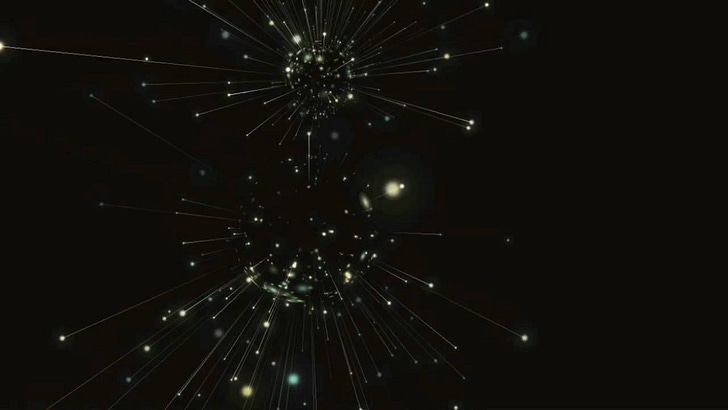Writing Through the Static: Lessons From the Radio
The Unexpected Connection Between Writing and Listening to the Radio.
If you know me personally, you might know that I enjoy listening to the radio. I mean AM/FM radio — not Spotify, not Apple Music, not a curated playlist of hits. I mean the real radio, with its crackles and surprises and fading signals.
There’s something about listening to the radio. You don’t know what’s coming next. Sometimes a song comes on that you haven’t heard in years - or you a catch tune that you’ve never heard before. Maybe it’s a fading baseball game or some post-punk tunes like Mogwai that you never actually listened to. Sometimes you catch just the last verse of something incredible before the DJ moves on. And sometimes the signal cuts out completely, and you're left with nothing but static – fuzzzzz – hoping it’ll come back. And sometimes you lean in and listen through that static. Sometimes for a long time.
And here’s the thing: when you're really tuned in, you stay with it.
And that, to me, is what writing is like.
📻 The Signal Fades, and You Keep Writing
A few weeks ago, I helped a student work through a personal narrative assignment using Pressto. At first, the ideas came fast — the opening sentence, the hook, the memory they wanted to tell. He wrote in a flurry for about five minutes.
Then he paused. His fingers stopped. The idea he’d been chasing just… disappeared. He deleted a few lines, stared at the blinking cursor, looked out the window. It was like the signal had faded. STATIC.
But he didn’t close the laptop. He didn’t switch tabs. He waited.
He reread what he’d written, tried a new sentence, deleted it, tried another. Ten minutes passed. And then — something came back. The words clicked. The story returned.
He chased the signal, and he caught it.
That’s writing.
🍿 Passive Content Makes Us Weak Thinkers
We’re all swimming in passive content now. Our phones show us exactly what we want, before we know we want it. Algorithms do the hard part — they listen for us. They write for us. They even think for us.
And while that’s convenient, it’s also corrosive to something deeper: our ability to struggle with uncertainty, to persist through confusion, and to create.
Writing is not passive consumption. It's not auto-play. It's not tapping through 15-second clips. Writing is deliberate. It’s uncertain. It requires silence. It rewards patience, persistence, and focus – not speed.
At Pressto, we’re not building a tool that “writes for you.” We’re building a tool that helps students hear their own ideas more clearly — and stay with them, even when they’re not fully formed. Especially then!
🧠 Structure Helps You Hear the Music
Structure in writing isn’t about control. It’s not prescriptive. It just helps with listening closely. The same way a radio antenna helps to pick up the signal, a well-framed writing structure helps students catch the ideas floating just out of reach.
This is why we build tools that don’t just say “start writing” — they offer guidance, rhythm, scaffolding. So when the signal gets fuzzy, the student knows where to focus their attention & how to stay tuned.
They don’t abandon the page. They write through the static.
❓So What Does the Future Look Like?
The emphasis on reading and *Science of Reading* is important, but the goal of a classroom should be to create a generation of creators, not consumers. A generation of critical thinkers, not passive scrollers.
What would it look like to create more active creators and critical thinkers? Not just passive content consumers. Students who are willing to chase a quiet and difficult idea until it becomes a clear signal that they can share?
Because in the end, whether you’re tuning in to a fading song on a late-night station or wrestling with the next sentence of a story, the skill is the same:
you listen, you wait, you stay with it.
The fuzz isn’t the enemy — it’s the space where the real work happens. And if we can teach students to listen & struggle through it, we’re not just teaching them to write.
We’re teaching them how to think.
We’re teaching them how to create.
We’re teaching them how to stay with the signal until the music comes back.
Thanks to Elisabeth Arnold Weiss and Barbara Stedman (aka Mom) for reading drafts of this.
This blog post was inspired while listening to Mogwai on Cove FM, Hubbards Radio Society in Seabright, Nova Scotia. I didn’t realize at the time that the album is called “No Education = No Future” !!!!
❤️ If you made it this far, please let me know what you think about this essay. This was more personal than past posts. ❤️




I think you have really touched on something important here. Our "hustle culture" mindset. Having everything at our fingertips due to the Internet. Algorithms and AI. All of these factors erode our patience, making us fall victim to how quickly we can produce something rather than the essence of the process. And the essence of the process, the "blood, sweat, and tears" that some may call it, is where the real magic of creativity occurs. Students need to focus less on "producing" and more on "the process," both in writing and in all of their other courses as well. Working through the static is not only an essential skill for developing an essay, but also for working through difficult subjects when studying for a test. Thank you for sharing!
As a fellow listener of the radio, I loved this essay. What a wonderful analogy for the writing process! Thanks for sharing.